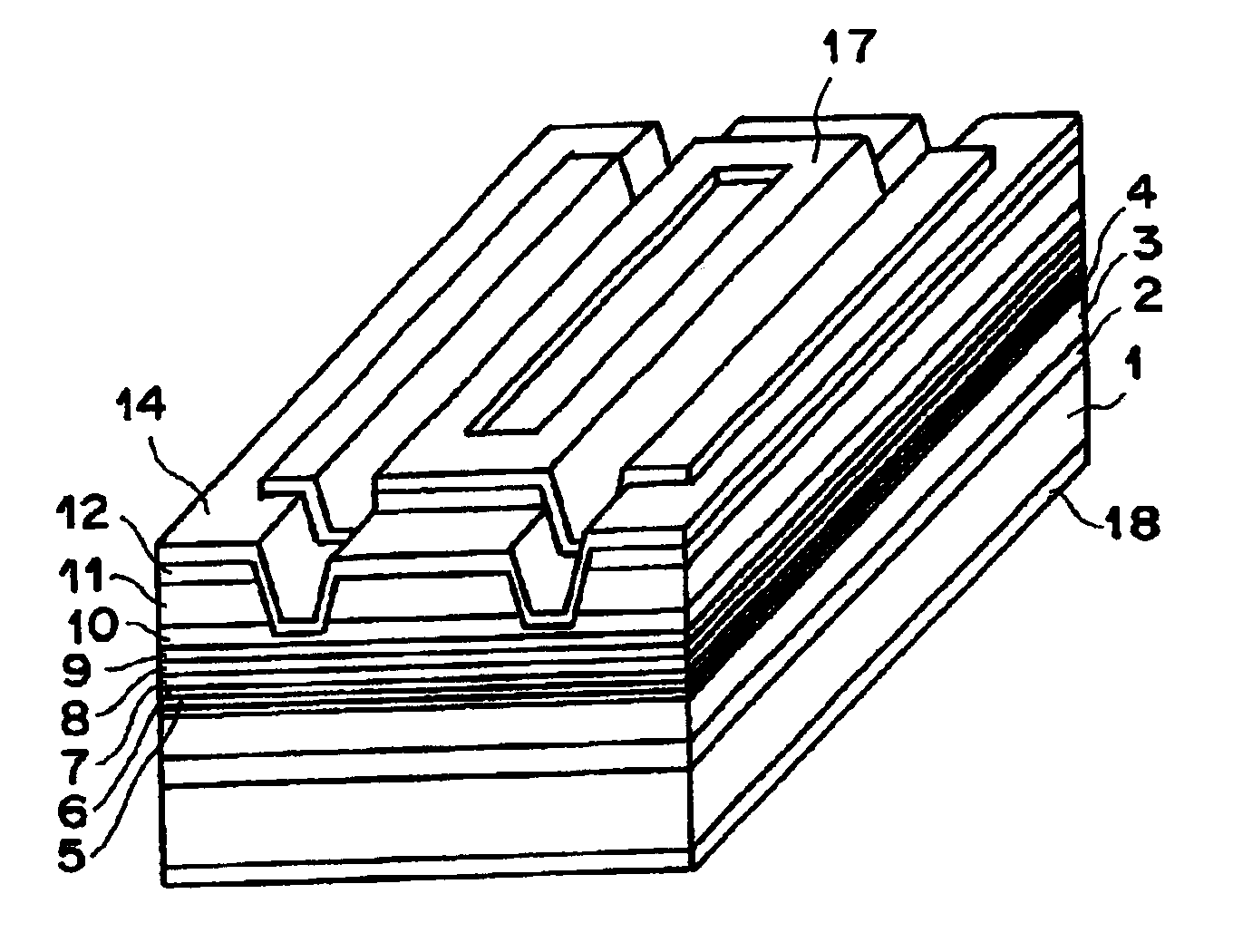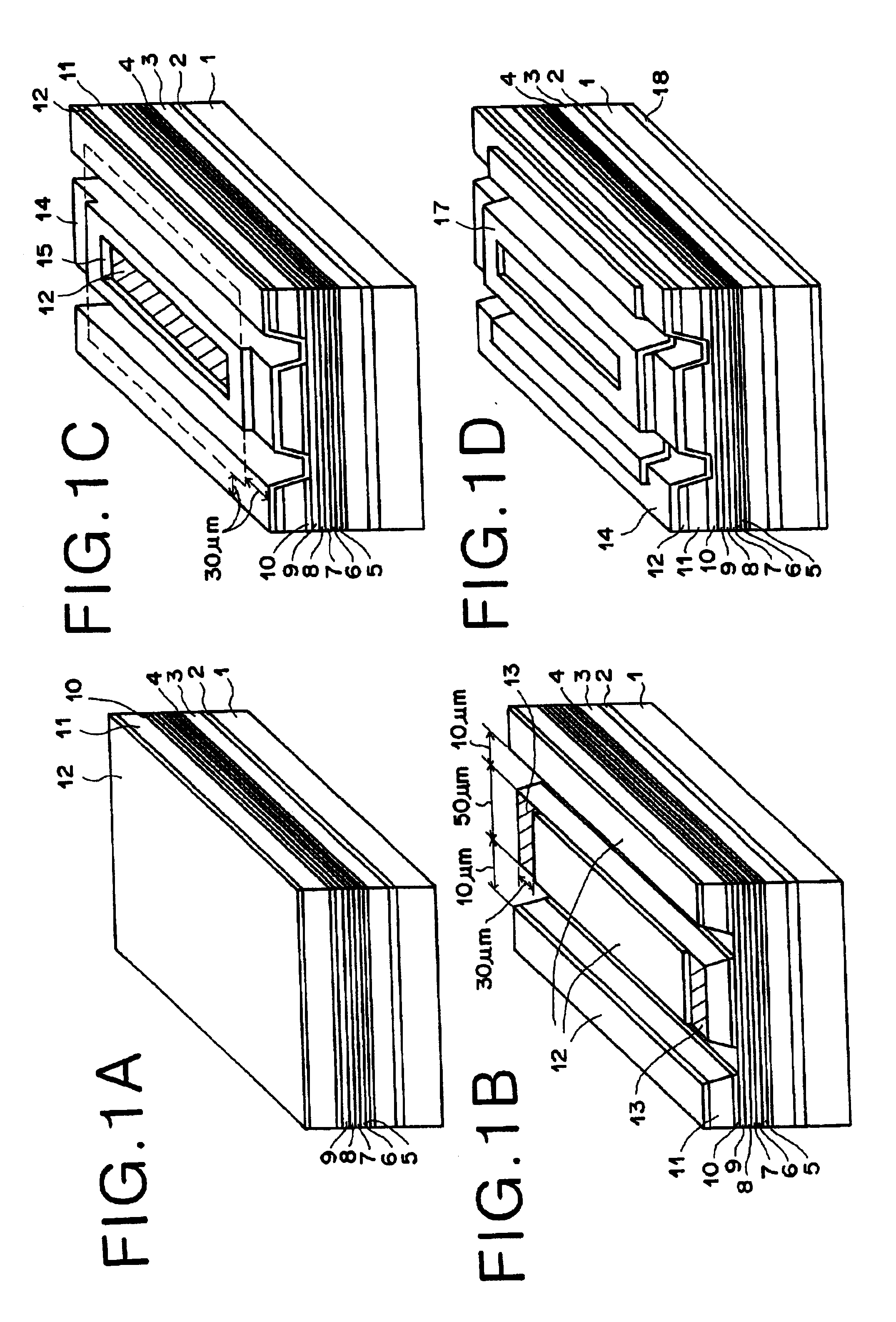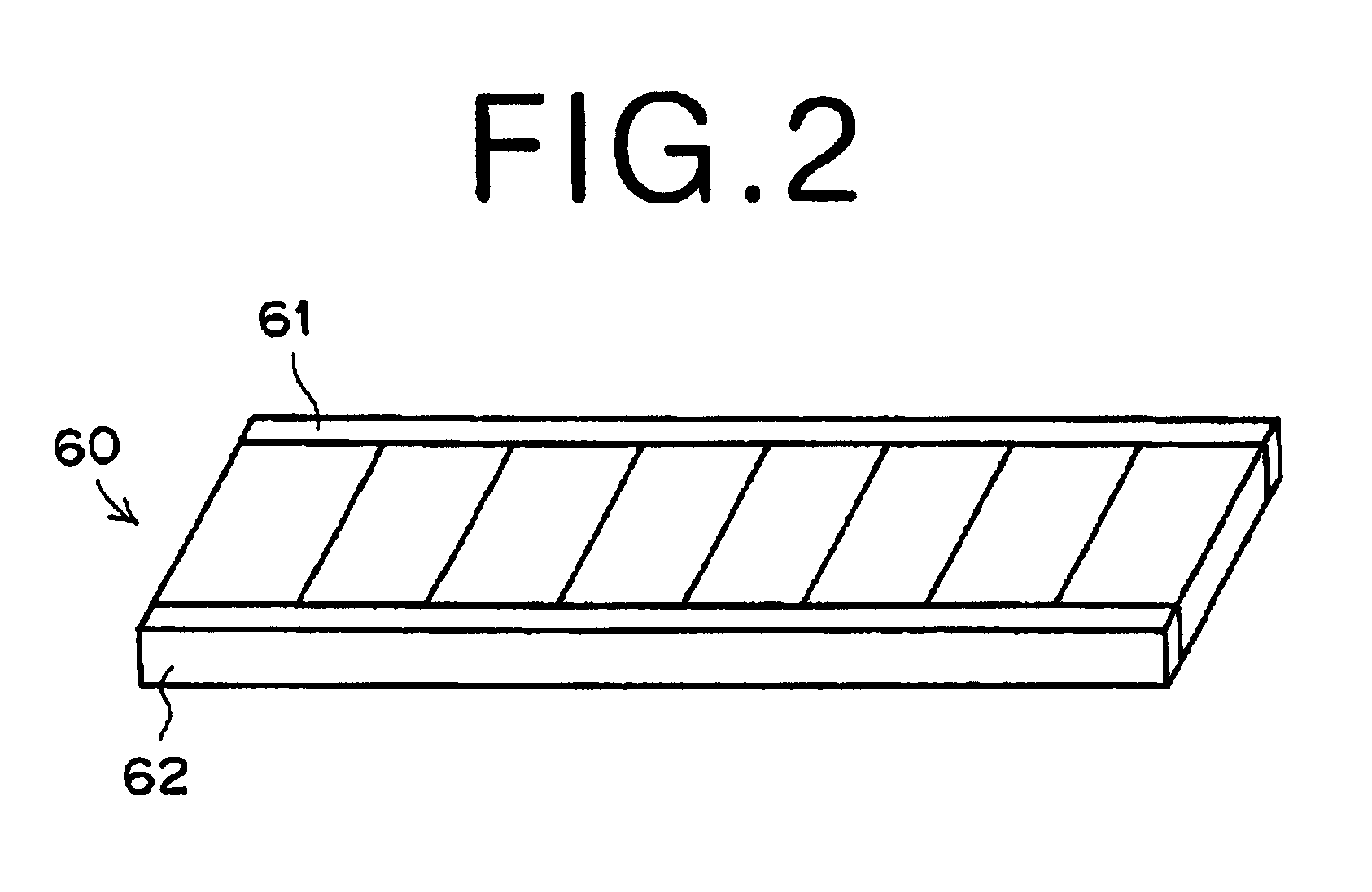Semiconductor laser device
a laser device and semiconductor technology, applied in the direction of lasers, semiconductor lasers, laser optical resonators, etc., can solve the problems of deteriorating window structure reproducibility, difficult to obtain high reliability, and difficult to obtain a highly reliable semiconductor laser at high yield
- Summary
- Abstract
- Description
- Claims
- Application Information
AI Technical Summary
Benefits of technology
Problems solved by technology
Method used
Image
Examples
Embodiment Construction
Description will be given of a semiconductor laser device according to an embodiment of the present invention, along with its manufacturing process. FIGS. 1A to 1D are perspective views showing respective steps of fabricating the semiconductor laser device.
As shown in FIG. 1A, on a plane (100) of an n-type GaAs substrate 1, grown by organometallic vapor phase expitaxy are an n-type GaAs buffer layer 2, an n-type In.sub.0.48 Ga.sub.0.52 P lower cladding layer 3, an n-type or i-type In.sub.x1 Ga.sub.1-x1 As.sub.1-y1 P.sub.y1 optical waveguide layer 4, an i-type GaAs.sub.1-y2 P.sub.y2 tensile-strain barrier layer 5, an In.sub.x3 Ga.sub.1-x3 As.sub.1-y3 P.sub.y3 compressive-strain quantum-well active layer 6, an i-type GaAs.sub.1-y2 P.sub.y2 tensile-strain barrier layer 7, a p-type or i-type In.sub.x1 Ga.sub.1-x1 As.sub.1-y1 P.sub.y1 upper optical waveguide layer 8, a p-type In.sub.0.48 Ga.sub.0.52 P first upper cladding layer 9, a GaAs etching stop layer 10, a p-type In.sub.0.48 Ga.sub...
PUM
 Login to View More
Login to View More Abstract
Description
Claims
Application Information
 Login to View More
Login to View More - R&D
- Intellectual Property
- Life Sciences
- Materials
- Tech Scout
- Unparalleled Data Quality
- Higher Quality Content
- 60% Fewer Hallucinations
Browse by: Latest US Patents, China's latest patents, Technical Efficacy Thesaurus, Application Domain, Technology Topic, Popular Technical Reports.
© 2025 PatSnap. All rights reserved.Legal|Privacy policy|Modern Slavery Act Transparency Statement|Sitemap|About US| Contact US: help@patsnap.com



